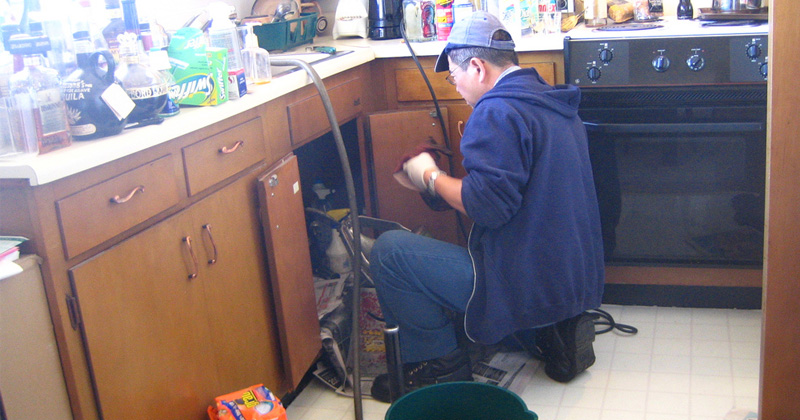Beginner's Guide to Efficient Bathroom Plumbing Maintenance
Beginner's Guide to Efficient Bathroom Plumbing Maintenance
Blog Article
Just about everyone seems to have their personal conception with regards to General Plumbing Tips for New Homeowners.

For new house owners, understanding and maintaining restroom pipes can save both money and time by stopping costly issues down the line. Right here are some crucial restroom plumbing pointers to assist you keep every little thing running efficiently.
Acquaint Yourself with the Key Shut-Off Shutoff
Recognizing where the primary water shut-off valve is located in your home is important. This enables you to rapidly turn off the water in case of significant leakages or during pipes emergencies, avoiding considerable water damage.
Consistently Examine for Leakages
Little leakages can result in large issues. Routinely examine under sinks, around toilets, and near pipes components for any type of indicators of leakages. Look for moisture, small drips, or corrosion. Catching and repairing leaks early can protect against much more severe damages and conserve water.
Do Not Overlook Slow Drains Pipes
If your sink or bathtub is draining slowly, it's typically a sign of a blockage developing. Addressing this early can stop a total obstruction. Utilize a plunger or a plumbing technician's snake to clear out debris. Prevent making use of chemical drainpipe cleansers as they can harm your pipelines gradually.
Know What Not to Flush
Bathrooms are not waste disposal unit. Prevent flushing anything other than toilet tissue and human waste. Items like wipes, feminine hygiene products, and cotton bud must be taken care of in the trash to prevent blockages and sewer backups.
Mount Strainers in Drains
Place filters in your sink and tub drains pipes to catch hair and various other debris prior to they enter your plumbing system. Cleaning the strainers consistently will assist prevent accumulation and maintain water moving freely.
Keep Your Water Heater
Guarantee your water heater is set to a proper temperature level (typically about 120 levels Fahrenheit) to stop hot and minimize power usage. Flush the tank every year to eliminate debris buildup, which can minimize the effectiveness and life expectancy of your heating system.
Upgrade Your Components
If your home has older fixtures, take into consideration updating to much more reliable models. Modern toilets, showerheads, and faucets are created to make use of much less water while offering great pressure, which can substantially minimize your water costs and ecological impact.
Be Cautious with Do It Yourself Pipes Repair Works
While it's tempting to handle all home fixings on your own, be cautious with pipes. Some concerns might call for specialist expertise, especially if they entail main water lines or sewer repair work. Employing a professional can often be a lot more cost-efficient than do it yourself, specifically if it avoids more damage.
Get Ready For Winter
Safeguard your pipes from cold throughout winter by shielding pipelines in unheated locations like basements, attic rooms, and garages. Throughout severe cold, allow cold water drip from taps served by exposed pipelines to assist stop freezing.
Arrange Routine Maintenance
Consider organizing annual assessments with a licensed plumbing professional. They can find concerns that you may miss, such as hidden leakages or damage on pipelines and fixtures. Routine upkeep assists expand the life of your plumbing system and can stop emergencies.
Conclusion
Understanding and keeping your home's washroom plumbing can prevent several typical issues. By following these crucial tips, you can guarantee your shower room remains useful and reliable, saving you money and time over time.
Essential Plumbing Tips for Homeowners: Keep Your Pipes Flowing Smoothly
As a homeowner, understanding the basics of your plumbing system can save you time, money, and a lot of headaches. Plumbing issues can range from minor annoyances like dripping faucets to major problems like burst pipes that cause significant damage. This guide provides essential tips to help you maintain your plumbing system and tackle common issues.
Understanding Your Plumbing System
Supply System: Brings fresh water into your home from a municipal source or a well. Drain-Waste-Vent System: Removes wastewater and vents sewer gases outside. Fixtures and Appliances: Includes sinks, toilets, showers, dishwashers, and washing machines. Basic Maintenance Tips
Regular Inspections: Periodically check for leaks, corrosion, and other signs of wear and tear. Look under sinks, around toilets, and near water heaters. Know Your Main Shut-Off Valve: In case of a major leak, you’ll need to shut off the water quickly. Ensure everyone in your household knows where the main shut-off valve is located. Prevent Frozen Pipes: In cold climates, insulate exposed pipes and let faucets drip during extreme cold to prevent freezing. Use Strainers: Install strainers in sinks and tubs to catch hair, food particles, and other debris that can cause clogs. Common Plumbing Issues and Solutions
Clogged Drains:
Prevention: Avoid pouring grease down the drain and use drain screens to catch debris. DIY Fix: Use a plunger or a plumbing snake to clear minor clogs. For stubborn clogs, a mixture of baking soda and vinegar can sometimes help. Leaky Faucets:
Prevention: Replace washers and seals regularly. DIY Fix: Turn off the water supply, disassemble the faucet, and replace worn parts.

Check This Out Report this page